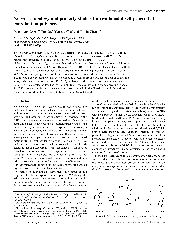摘要
Two coordination polymers, [Co(II)Cu(I)(m-BDC)(BIPY)(1.5)(m-NBZ)](n) (1) and [Co(4)(II)(BPTC)(2)(BBI)(4)](n) (2), (where BIPY = 4,4'-bipyridine, BBI = 1,1'-(1,4-butanediyl)bis(imidazole), m-BDC = 1,3-benzenedicarboxylate, m-HNBZ = m-nitrobenzoic acid and H(4)BPTC = 3,3',4,4'-biphenyltetracarboxylic acid), have been obtained under solvo/hydrothermal conditions, which were characterized by single-crystal X-ray diffraction, XRPD, IR, ICP, TGA, and elemental analysis. Both 1 and 2 feature two unusual binodal self-penetrated architectures: 1 presents a 2-D network with (4.6(2))(2)(4(2).6(2).8(2)) topology in terms of the rationalization of T-shaped Cu(I) and Co(2) unit as 3- and 4-connected node, respectively; however, compound 2 built up from a flexible long-chain ligand and a polycarboxylate confers a 3-D (6(2).8(4))(6(4).8(2))(2) net based on the definition of square-planar and tetrahedral 4-connected nodes. The magnetic study of 1 was carried out in the temperature range of 5-300 K, showing antiferromagnetic coupling interaction within the dimeric Co(2) unit. In addition, 1 was found to exhibit fluorescence at about 420 nm (lambda(ex) = 330 nm).
- 出版日期2010
- 单位rutgers; 南开大学
